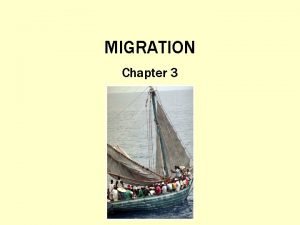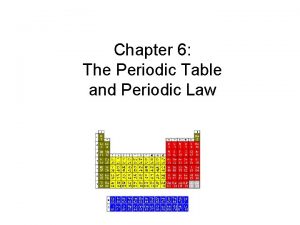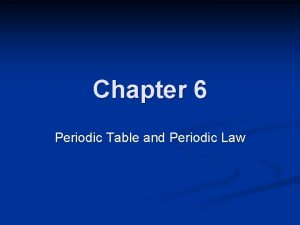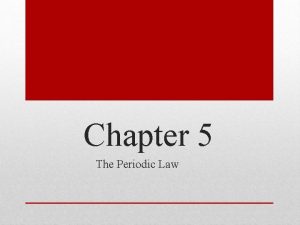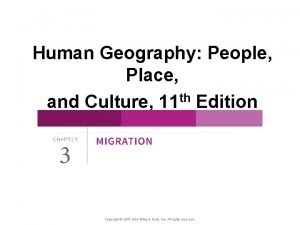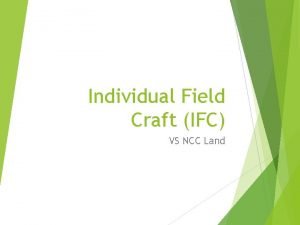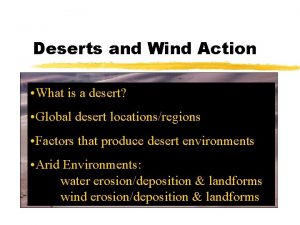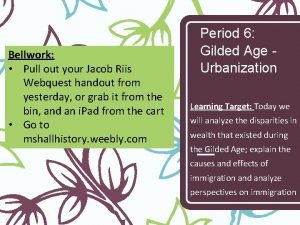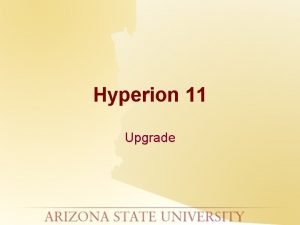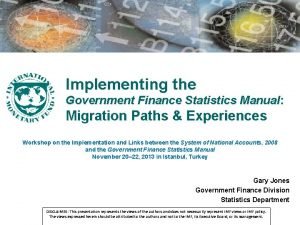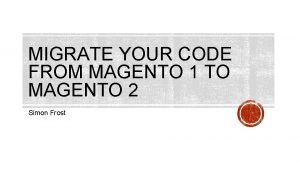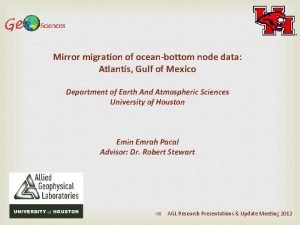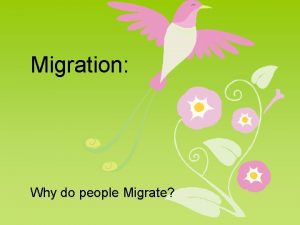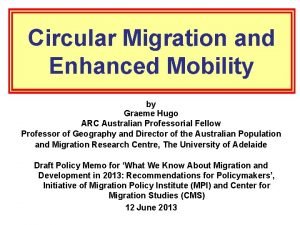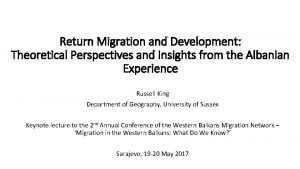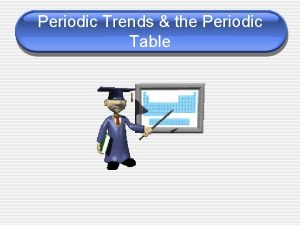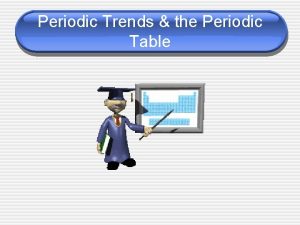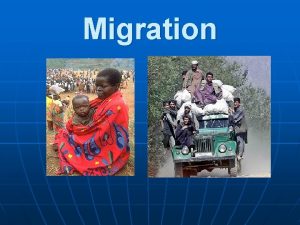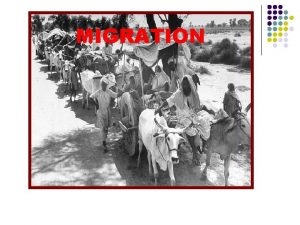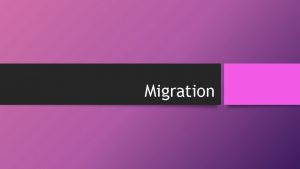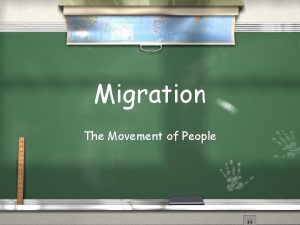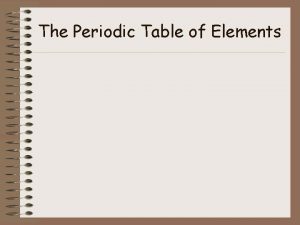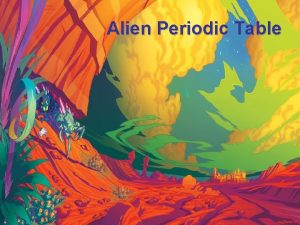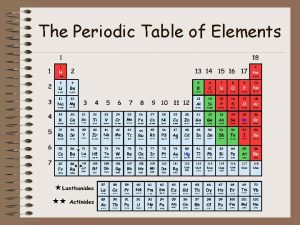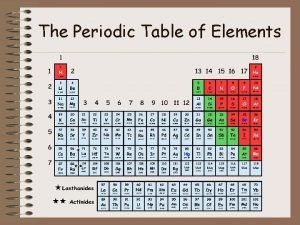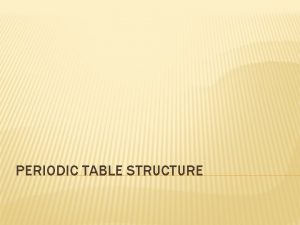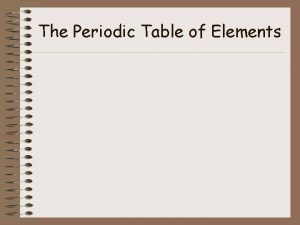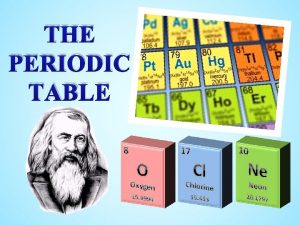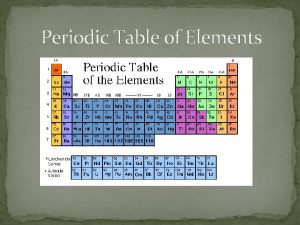MIGRATION DAY 2 C Movement Periodic Movement movement








































- Slides: 40

MIGRATION DAY 2 C

Movement • Periodic Movement – movement • Cyclic Movement – movement away from home for a short period. • Commuting • Seasonal movement away from home for a longer period. • Migrant labor • Transhumance (moving livestock according to seasonal availability of pastures) • Military service

International Migration – Movement across country borders (implying a degree of permanence).

Internal Migration Movement within a single country’s borders (implying a degree of permanence).

Voluntary Migration – Migrants weigh push and pull factors to decide first, to emigrate from the home country and second, where to go. Distance Decay weighs into the decision to migrate, leading many migrants to move less far than they originally contemplate.

Kinds of Voluntary Migration • Counter (return) migration • When people eventually move back to wherever their ‘home’ was • About 25% will do this • Channelized migration • Repetitive pattern of migration that is not linked to family or ethnicity • Some other draw to the area is pulling people in

Kinds of Voluntary Migration • Step Migration – When a migrant follows a path of a series of stages, or steps toward a final destination. example: peasant family goes from fields to village to a town, then to a city, and finally to a metropolis area * intervening opportunity –at one of the steps along the path, pull factors encourage the migrant to settle there. • Chain Migration – When a migrant communicates to family and friends at home, encouraging further migration along the same path, along kinship links. Results in urban ethnic enclaves

Ravenstein’s Laws of Migration • 1. Every migration flow generates a return or counter migration • 2. The majority of migrants move a short distance • 3. Migrants who move longer distances tend to choose big city destinations • 4. Urban residents are less migratory than inhabitants of rural areas • 5. Families are less likely to make international moves than young adults

Wilbur Zelinsky Migration Transition Model • Stage 1 - no countries in stage 1 • Stage 2 - lots of rural to urban regional migration, and emigration out of the country to stage 3 and 4 countries • Stage 3 - gets lots of rural to urban regional migration, and immigrants from periphery countries to work in industry, some emigration from more highly educated people to go to stage 4 and 5 countries • Stage 4 - some rural to urban regional migration especially with gentrification and new urbanism, lots of immigrants from periphery and semi-periphery countries (war, genocide, conflicts, gender inequality push factors) • Stage 5 - some immigrants from regional countries experiencing conflict and people moving to urban areas that have been gentrified and people moving to rural areas who don’t like new urbanism

Theories of Migration • Human Capital Theory • Capital = $$$ • Educated migrants move to a wealthier country seeking betterpaying jobs • Send remittances home • Both countries benefit • Life Course Theory • Changes in education and occupation are major reasons why people decide to change their region or country • Marriage • Children • Divorce • College

WHERE DO PEOPLE MIGRATE? Different. C scales: Global Regional national

Global Migration Flows • Between 1500 and 1950, major global migration flows were influenced largely by: • Exploration • Colonization • The Atlantic Slave Trade • Impacts the place the migrants leave and where the migrants go.

Major Global Migration Flows From 1500 to 1950

Regional Migration Flows • Migrants go to neighboring countries: - for short term economic opportunities. - to reconnect with cultural groups across borders. - to flee political conflict or war.

Economic Opportunities Islands of Development – Places within a region or country where foreign investment, jobs, and infrastructure are concentrated.

Economic Opportunities In late 1800 s and early 1900 s, Chinese migrated throughout Southeast Asia to work in trade, commerce, and finance.

Reconnecting Cultural Groups About 700, 000 Jews migrated to then. Palestine between 1900 and 1948. After 1948, when the land was divided into two states (Israel and Palestine), 600, 000 Palestinian Arabs fled or were pushed out of newly-designated Israeli territories.

Jerusalem, Israel: Jewish settlements on the West Bank.

National Migration Flows • Also known as internal migration - eg. US, Russia, Mexico

Guest Workers • Guest workers – migrants whom a country allows in to fill a labor need, assuming the workers will go “home” once the labor need subsides. - have short term work visas - send remittances to home country

HOW DO GOVERNMENTS AFFECT MIGRATION? C

Refugees A person who flees across an international boundary because of a wellfounded fear of being persecuted for reasons of race, religion, nationality, membership of a particular social group, or political opinion.

Refugees • International refugees- move outside of their home state to flee a perceived or actual threat. • Example: Syrians fleeing to Turkey • Example: After the Taliban was created in Pakistan, over 2. 5 million Afghanis fled to Iran • Internal refugees- move within their home state to flee a perceived or actual threat. • Example: Hurricane Katrina victims • Also known as an IDP- internally displaced person

Regions of Dislocation – What regions generate the most refugees? • Subsaharan Africa • About 8 million “official” refugees. • Rwanda and the Hutu-Tutsi strife • Darfur and South Sudan • North Africa and Southwest Asia • Afghanistan and the Taliban led refugees to flee to Iran • Syrian Civil War • South Asia • Pakistan accommodating Afghanistan’s forced emigrants and Civil War in Sri Lanka • Southeast Asia • Vietnam War, violence, and the Myanmar minority • Europe • End of WWI and the Collapse of Yugoslavia into 7 different countries

The Sudan – Fighting in the Darfur region of the Sudan has generated thousands of refugees. In eastern Chad, the Iridimi refugee camp is home to more than 15, 000 refugees from the Darfur province, including the women in this photo.


• Understanding the refugee problem

Governments Place Legal Restrictions on Migration • Immigration laws – laws that restrict or allow migration of certain groups into a country. • Example: The Oriental Exclusion Acts (1882 -1907) to prevent the immigration of Chinese people to California • Quotas limit the number of migrants from each region into a country. • Example: limiting the amount of immigrants from Europe to 3% of the number of its nationals living in the U. S. • A country uses selective immigration to bar people with certain backgrounds from entering. • Criminal records, poor health, subversive activities

Waves of Immigration Changing immigration laws, and changing push and pull factors create waves of immigration. US Immigration- History Of

An Asylum Seeker is a refugee who has applied to be able to work in their new country that they fled to. This could potentially speed up the process of becoming a citizen. This is also a more ‘legal’ way to live in the country you fled to.

Post-September 11 The map below shows the countries from which asylum seekers are automatically detained by the U. S. Government. This is because al-Qaeda or other terrorist groups are known to operate to some extent there.

US Immigration • Crash Course- US Immigration

THE RUST BELT Ohio, Indiana, Michigan, and Pennsylvania C

The Rust Belt • In the 1960 s, large numbers of white, middle-class Americans moved from older northeastern and midwestern cities to the South and to the West Coast • Ohio, Michigan, Indiana, and Pennsylvania were previously industrial powerhouses with vibrant economies • Now, factories were closing down and people were losing their jobs

The Corn Belt • North Dakota, South Dakota, Kansas, Missouri, Iowa, Minnesota, Wisconsin, *Illinois, *Indiana, Ohio

THE COTTON BELT C What the south used to be known as because of agrarian poverty and backwardness

The Cotton Belt • States known for growing and distributing cotton • Texas, Louisiana, Alabama, Mississippi, Arkansas, Georgia, Florida, South Carolina, North Carolina

THE SUN BELT C What the south, along with parts of the southwest became The land of new opportunity

The Sun Belt • Florida, Georgia, Tennessee, and North Carolina • Texas, Arizona, New Mexico, Nevada, and Southern California • Louisiana, Mississippi, Alabama • Experiencing large population growth • 1960 s- growth spreading to places like Phoenix, Las Vegas, Dallas, Miami, Tampa, Austin, and Nashville

 Day 1 day 2 day 3 day 4
Day 1 day 2 day 3 day 4 Day 1 day 2 day 817
Day 1 day 2 day 817 Cyclic movement definition
Cyclic movement definition Cyclic migration definition
Cyclic migration definition Atomic trends
Atomic trends Periodic family names
Periodic family names 6 the periodic table
6 the periodic table Chapter 6 the periodic table
Chapter 6 the periodic table Chapter 5 periodic law
Chapter 5 periodic law Periodic movement definition ap human geography
Periodic movement definition ap human geography Day to day maintenance
Day to day maintenance Observation of seed germination day by day
Observation of seed germination day by day Rising he justified freely forever
Rising he justified freely forever Physical science chapter 6 review answers
Physical science chapter 6 review answers Germination conclusion
Germination conclusion Schoolmax login
Schoolmax login Day one day one noodle ss2
Day one day one noodle ss2 What time in the morning is it romeo and juliet
What time in the morning is it romeo and juliet Tomorrow i dont know
Tomorrow i dont know Seeds vs spores
Seeds vs spores Ocean the part day after day
Ocean the part day after day Dayone dayone ss2
Dayone dayone ss2 Growing day by day
Growing day by day I live for jesus day after day
I live for jesus day after day Rosa parks mother
Rosa parks mother Broken ground in ncc
Broken ground in ncc Non-movement area
Non-movement area Axial movement dance examples
Axial movement dance examples In the desert, ephemeral streams _____.
In the desert, ephemeral streams _____. Project server migration
Project server migration Great migration webquest
Great migration webquest Hyperion migration from version 9 to 11
Hyperion migration from version 9 to 11 Cloud
Cloud Government finance statistics manual
Government finance statistics manual Magento 2 code migration
Magento 2 code migration Rhetoric poetry
Rhetoric poetry Mirror migration
Mirror migration Intervening opportunities
Intervening opportunities Voluntary migration cartoon
Voluntary migration cartoon Circular migration definition ap human geography
Circular migration definition ap human geography Migration hump
Migration hump


